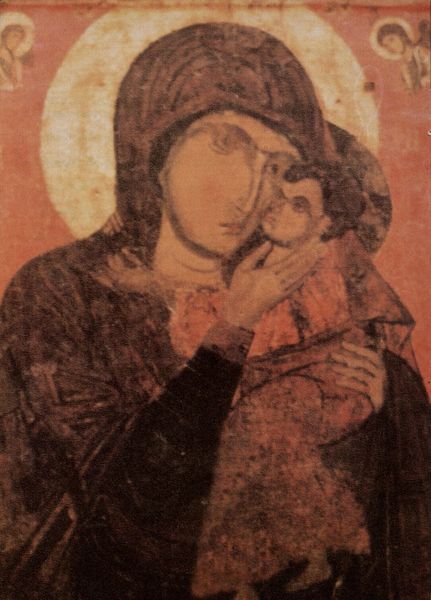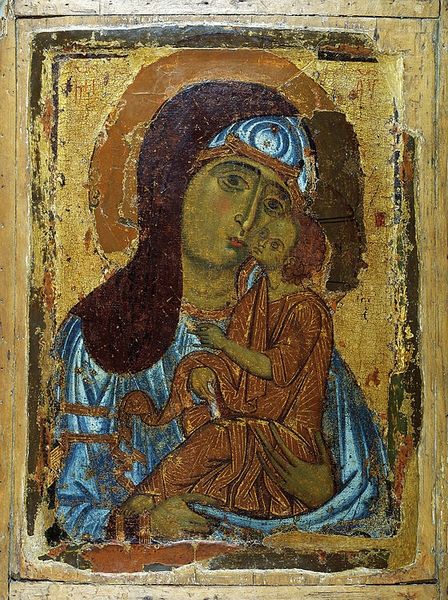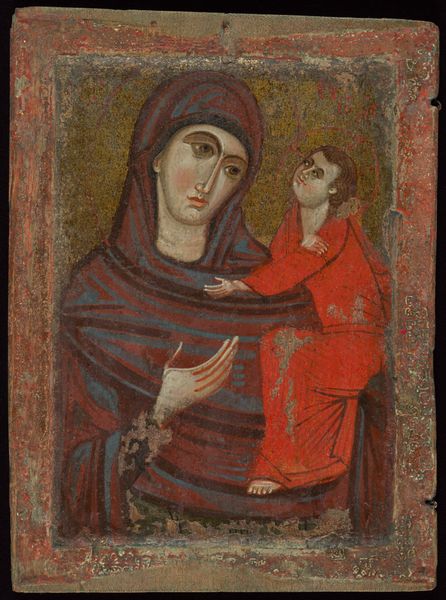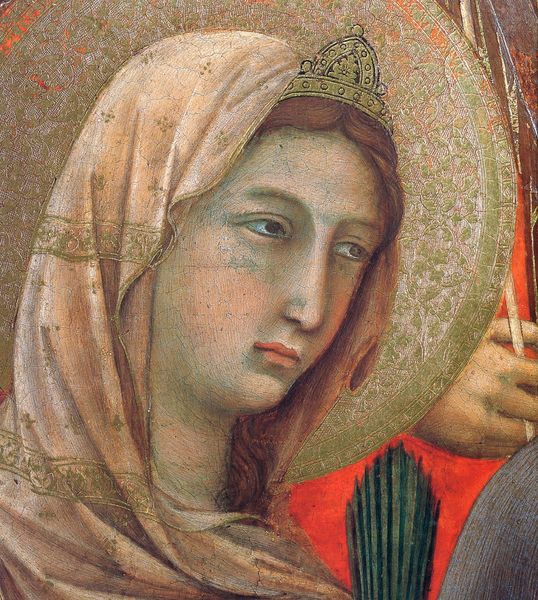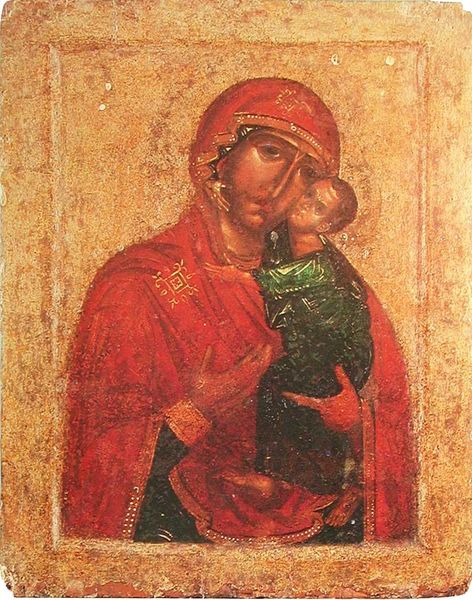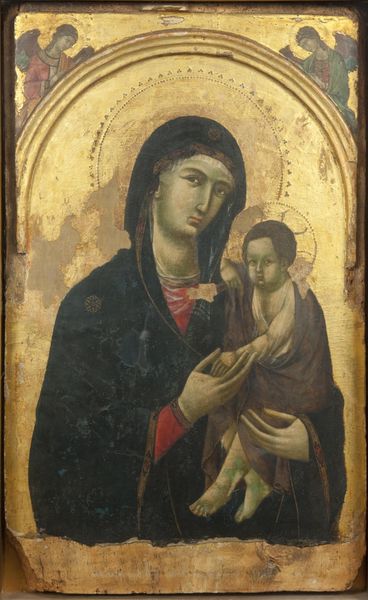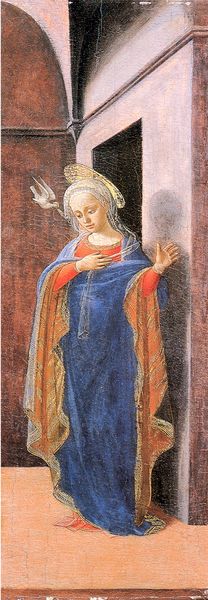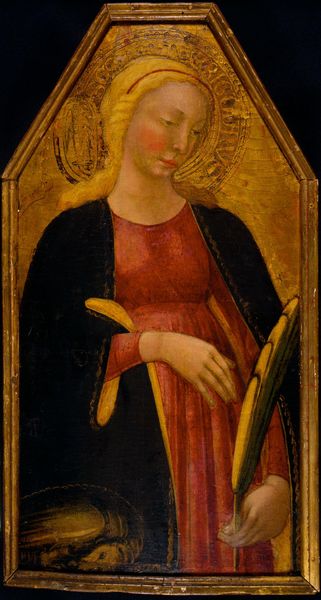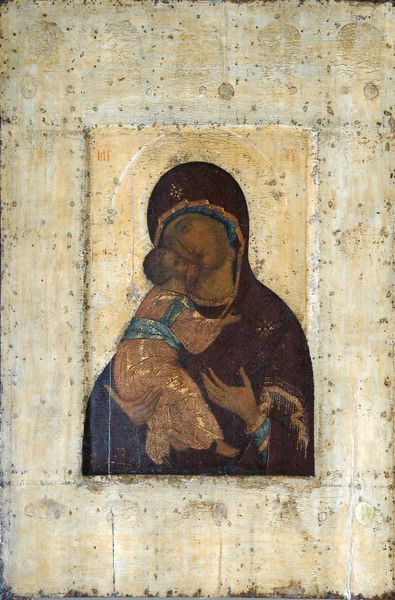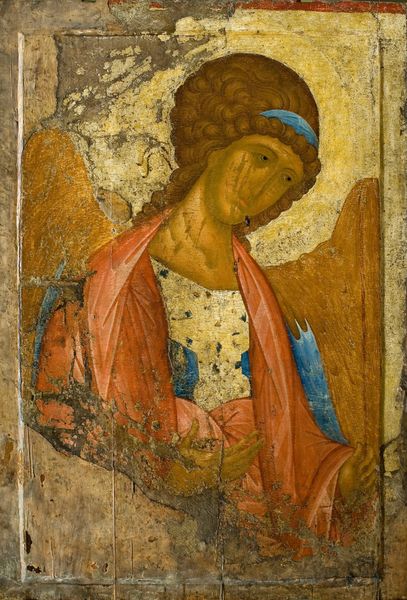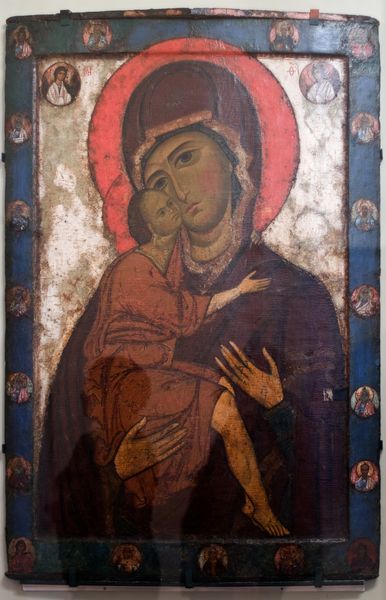
painting, oil-paint
#
portrait
#
byzantine-art
#
painting
#
oil-paint
#
figuration
#
oil painting
Copyright: Orthodox Icons,Fair Use
Editor: Here we have "Kharkiv Theotokos of Vladimir," an oil painting dating back to 1887. There's a solemn, almost worn feeling to it, perhaps owing to the patina of age. How do you interpret the historical significance of this image, particularly within the context of Orthodox iconography and its relationship to social power structures of the time? Curator: That sense of wear is critical, isn't it? This piece speaks volumes about the role of icons within both personal devotion and public life. The Theotokos, the Mother of God, becomes a figure onto which hopes, fears, and social anxieties are projected. This particular icon, painted in the late 19th century, sits at a fascinating intersection. What sociopolitical dynamics might have influenced the artist’s rendering, and how does it either uphold or challenge existing class structures? Editor: That's a great question. It feels like there's both reverence and maybe even a hint of social commentary in the way the subjects are painted, but it's subtle. I suppose the way Mary is depicted says something. It would be interesting to know what sector of the population it speaks to... Curator: Exactly! Now consider the materials themselves: Oil paint was becoming more accessible, enabling wider artistic production, potentially disrupting traditional hierarchies. Does this democratisation change the relationship between the viewer and the sacred figure, and if so, what are the implications for both religious and social structures of the time? What power dynamics might be encoded? Editor: I hadn't thought about the choice of materials that way! It makes you wonder who had access to create or possess these images, and how that impacted their message and reception. Curator: Precisely. The “worn feeling,” as you described it, reflects the accumulated weight of those questions, layering the personal with the political. I think that tension, that interplay between devotion and socioeconomic critique, offers a powerful lens for interpreting this icon. Editor: That really changes how I see it. It's more than just a religious image; it’s a window into a complex social and political world. Thanks! Curator: Absolutely. These intersections reveal so much. Thank you for your insights.
Comments
No comments
Be the first to comment and join the conversation on the ultimate creative platform.

